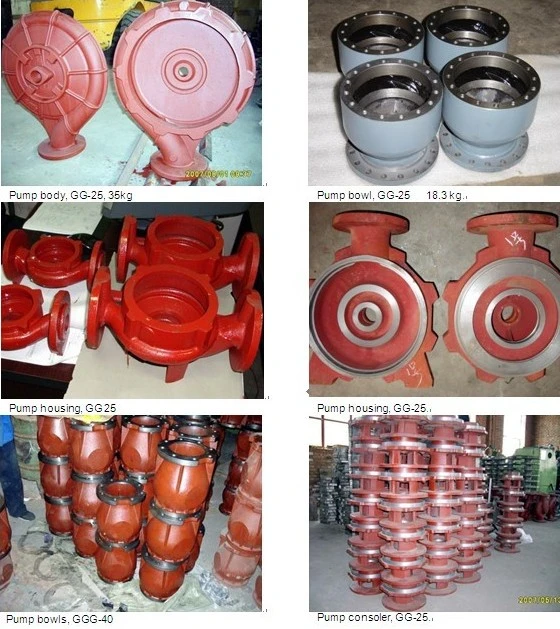Mobile:+86-311-808-126-83
Email:info@ydcastings.com
Understanding the Dynamics of Rotating Impellers in Fluid Mechanics Applications
The Mechanics and Applications of Rotating Impellers
In the realm of mechanical engineering and fluid dynamics, the rotating impeller is an essential component that plays a crucial role in the movement and manipulation of fluids. Whether found in pumps, fans, or turbines, impellers are designed to convert rotational energy into fluid energy, thereby facilitating the transfer of fluids in various applications. This article explores the mechanics of rotating impellers, their types, applications, and recent advancements in technology that have enhanced their functionality.
The Mechanics of Rotating Impellers
At its core, an impeller consists of a series of blades or vanes that rotate around an axis, typically driven by a motor. When the impeller spins, it imparts kinetic energy to the fluid, causing it to flow. The mechanics of this process can be described using fundamental principles of fluid dynamics. The rotational motion generates a pressure differential, leading to fluid movement. This interaction is governed by the laws of conservation of mass and energy, making impellers a pivotal component in various systems where fluid transfer is necessary.
The performance of an impeller is heavily influenced by its design, which includes factors such as blade shape, size, and the number of blades. The geometry can significantly impact the efficiency of fluid movement. For instance, an impeller with curved blades can create a more uniform flow compared to flat blades, reducing turbulence and energy losses. Additionally, the rotational speed of the impeller also plays a critical role; higher speeds increase the energy imparted to the fluid but can also lead to mechanical stresses, requiring careful balancing in design.
Types of Rotating Impellers
Rotating impellers can be categorized into several types based on their functions and designs. The most common types include
1. Centrifugal Impellers These are widely used in pumps and fans, designed to increase the pressure of fluid as it moves outward from the center of rotation. They are highly efficient for moving large volumes of liquids and gases.
2. Positive Displacement Impellers Unlike centrifugal impellers, these are used in applications where fluid needs to be moved at a constant flow rate regardless of pressure variations. They are commonly found in gear pumps and diaphragm pumps.
3. Mixed Flow Impellers These impellers combine features of both centrifugal and axial flow impellers. They can handle both high flow rates and high-pressure scenarios, making them versatile in a variety of applications.
4. Axial Impellers Used primarily in applications like ventilation and aerodynamics, axial impellers move fluid parallel to the axis of rotation, making them ideal for cooling systems.
rotating impeller

Applications of Rotating Impellers
The applications of rotating impellers span across various industries, including chemical processing, water treatment, HVAC (heating, ventilation, and air conditioning), automotive, and aerospace. Some of the notable applications include
- Pumps Rotating impellers are integral in various types of pumps, including water pumps for irrigation, chemical pumps for industrial processes, and sewage pumps for municipal systems. They ensure efficient fluid movement and pressure generation.
- Cooling Systems In HVAC systems, axial fans use rotating impellers to circulate air efficiently, maintaining desired temperature and air quality in buildings.
- Turbines In power generation, rotating impellers found in turbines convert fluid energy from steam or water into mechanical energy, driving generators for electricity production.
- Aerospace In the aerospace industry, impellers are used in engines to compress air, optimizing combustion and enhancing performance.
Recent Advancements
Recent advancements in technology have led to the development of more efficient and durable impeller designs. Computational fluid dynamics (CFD) simulations allow engineers to optimize impeller shapes for specific applications, leading to increased efficiency and reduced energy consumption. Additionally, the integration of smart sensors and Internet of Things (IoT) technology enables real-time monitoring of impeller performance, facilitating predictive maintenance and further enhancing operational efficiency.
Conclusion
Rotating impellers are a fundamental aspect of fluid dynamics, impacting a wide range of industries and applications. Their ability to efficiently transfer fluid energy makes them indispensable in modern engineering. As technology continues to evolve, the design and functionality of rotating impellers will likely improve, paving the way for more sustainable and efficient fluid management solutions. The future of impeller technology promises exciting advancements that will continue to enhance performance in various sectors, meeting the growing demands of our increasingly complex industrial landscape.
-
Why Should You Invest in Superior Pump Castings for Your Equipment?NewsJun.09,2025
-
Unlock Performance Potential with Stainless Impellers and Aluminum End CapsNewsJun.09,2025
-
Revolutionize Your Machinery with Superior Cast Iron and Aluminum ComponentsNewsJun.09,2025
-
Revolutionize Fluid Dynamics with Premium Pump ComponentsNewsJun.09,2025
-
Optimizing Industrial Systems with Essential Valve ComponentsNewsJun.09,2025
-
Elevate Grid Efficiency with High-Precision Power CastingsNewsJun.09,2025











